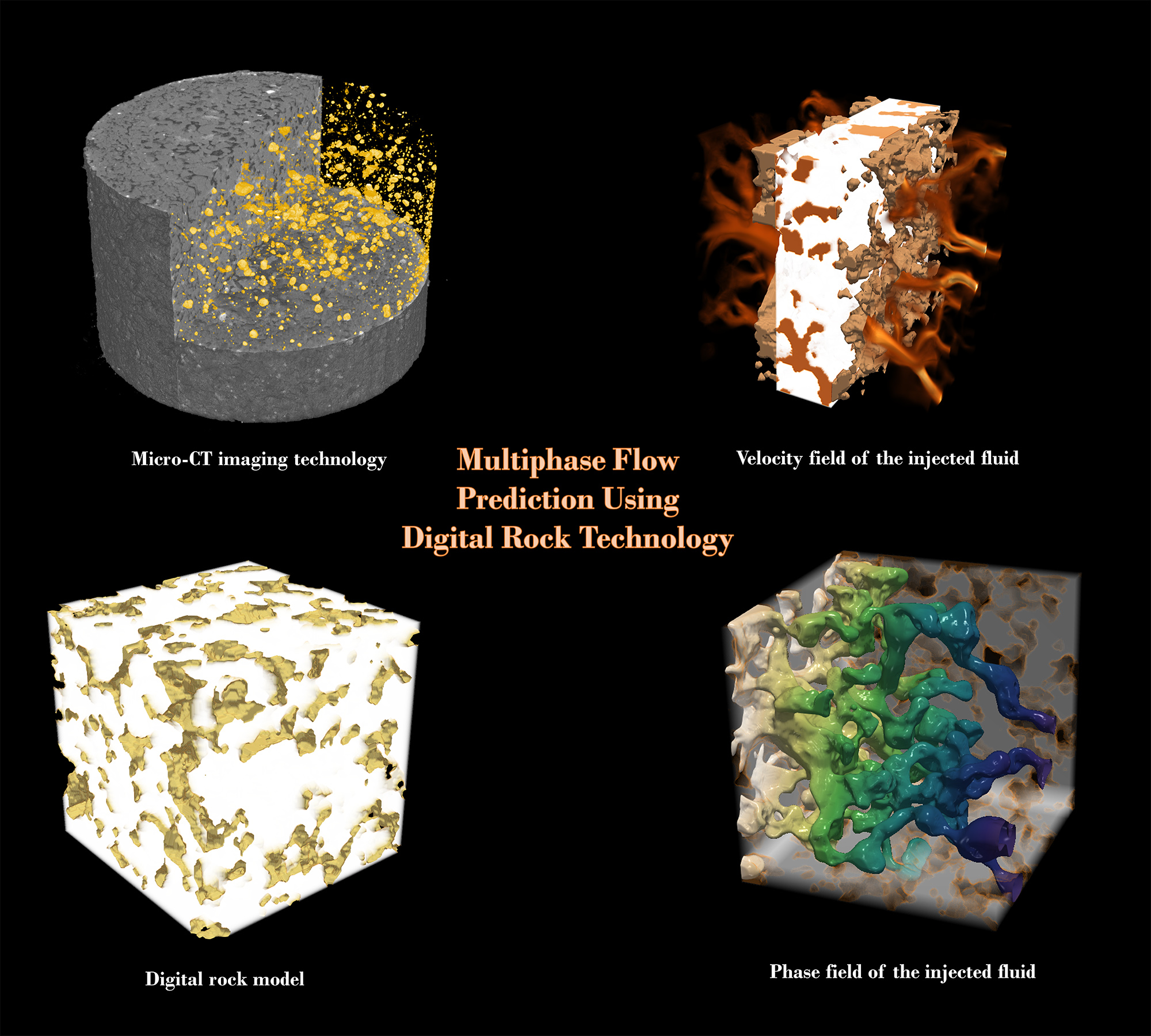April 26, 2021

Sahar Bakhshian
Multiphase Flow Prediction in Heterogeneous Subsurface Formations
Multiphase flow in subsurface settings is the backbone of processes such as hydrocarbon recovery, geological storage of CO₂, nuclear waste disposal, and contaminant transport in aquifers. The existence of different length scales varying from pore-scale to reservoir-scale adds an element of complexity to the nature of the subsurface fluid flow. The non-uniform distribution of fluid phases due to the complexity and fine-scale heterogeneity of pore structures has a profound impact on fluid flow dynamics at large scales.
To better understand this complexity and help optimize the subsurface processes, we develop direct pore-scale numerical simulations of multiphase flow in three-dimensional real rock models. Our fluid flow modeling techniques, which leverage digital rock technology such as micro-tomographic imaging, provide detailed descriptions of multiphase flow and in situ fluid distributions in the microscopic structure of real rocks. Exploiting parallel computing algorithms and high- performance computing (HPC) platforms enable us to efficiently handle computationally intensive simulations on highly-resolved rock images. We have extensively employed these techniques to the CO₂ geo-sequestration context to gain better insight into the multiphysics process of CO₂ migration and its corresponding trapping mechanisms, which have a considerable impact on the storage capacity of saline aquifers. Our efforts in this area can provide a robust tool for subsurface modeling, which is capable of accurate characterization of fluid migration in geological settings.
For more information, please refer to our website at http://www.jsg.utexas.edu/sb.
